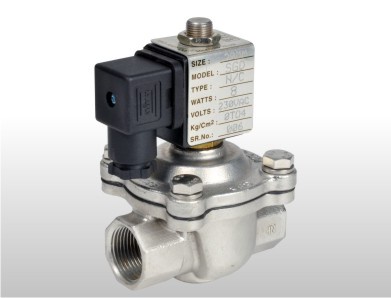Solenoid valves, the workhorses of industrial automation, have been silently ensuring precise flow control for decades. But the future of flow control is far from stagnant. With advancements in materials, miniaturization, and integration, innovative solenoid valve technologies are poised to revolutionize various industries. This article explores the exciting landscape of these advancements and how they're shaping the future of flow control.
Addressing Longstanding Challenges
Traditional solenoid valves face limitations like high power consumption, bulky size, and susceptibility to wear and tear. These limitations can translate to increased operating costs, limited integration possibilities, and maintenance headaches. However, recent innovations are directly addressing these pain points.
- Low-Power Revolution: A significant thrust area is the development of low-power solenoid valves. By optimizing designs and employing new materials, manufacturers are achieving significant reductions in power consumption. This translates to lower operating costs, particularly beneficial for battery-powered applications and those with a large number of valves. Additionally, it reduces heat generation, improving valve lifespan and reliability.
- Miniaturization for Microfluidics: The miniaturization trend is particularly relevant in the burgeoning field of microfluidics, which deals with manipulating fluids at the microliter scale. Miniaturized solenoid valves with precise flow control capabilities are crucial for applications in medical diagnostics, lab-on-a-chip devices, and microfluidic analytical systems. These valves are incredibly small, some as tiny as a grain of rice, enabling compact and portable devices.
- Enhanced Materials for Durability: New materials with superior wear resistance and corrosion protection are being incorporated into solenoid valve designs. This extends valve lifespan, reduces maintenance downtime, and allows for operation in harsher environments with aggressive fluids. For instance, the use of advanced ceramics and novel polymers is enhancing valve performance in chemical processing and oil and gas applications.
Integration and Automation: The Rise of Smart Valves
The future of flow control is intertwined with the trend towards industrial automation and the Internet of Things (IoT). Solenoid valves are no longer standalone components; they are increasingly equipped with integrated electronics and sensors.
- Improved Process Control: Smart valves enable real-time monitoring and adjustment of flow parameters, leading to more precise and efficient processes. This translates to better product quality, reduced waste, and optimized resource utilization.
- Predictive Maintenance: Sensor data from smart valves can be used for predictive maintenance. By analyzing trends in valve performance, potential failures can be identified before they occur, allowing for proactive maintenance and minimizing downtime.
- Remote Monitoring and Control: The integration of wireless communication capabilities allows for remote monitoring and control of valves. This is particularly beneficial for applications in geographically dispersed locations or hazardous environments, improving safety and operational efficiency.
Emerging Applications: Unlocking New Possibilities
Innovative solenoid valve technologies are opening doors for exciting new applications across various industries:
- Medical Devices: Miniaturized and biocompatible solenoid valves are finding use in drug delivery systems, microfluidic diagnostics, and minimally invasive surgical tools.
- Energy Sector: Smart valves with high-pressure capabilities are being developed for applications in renewable energy, such as controlling flow in geothermal and solar power plants.
- Aerospace and Aviation: Solenoid valves with rapid response times and lightweight designs are crucial for fuel and hydraulic systems in aircraft.
- Environmental Monitoring: Smart valves with integrated sensors are being used for precise control and monitoring of fluid flow in environmental monitoring systems.
Conclusion: A Brighter Future for Flow Control
The future of flow control is undoubtedly shaped by innovative solenoid valve technologies. Advancements in low-power consumption, miniaturization, and integration with electronics and sensors are transforming these valves into intelligent components that optimize processes, improve efficiency, and unlock new application possibilities. As industries continue to embrace automation and the IoT, solenoid valves will play an increasingly critical role in ensuring precise and reliable flow control for a smarter and more sustainable future.


No comments yet